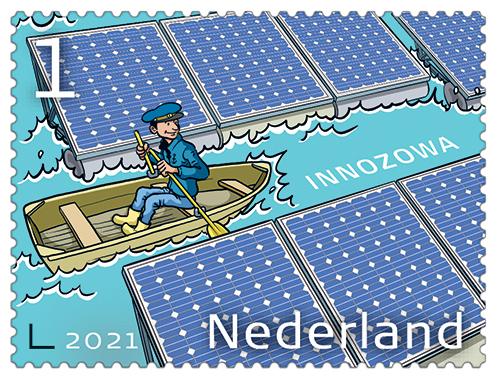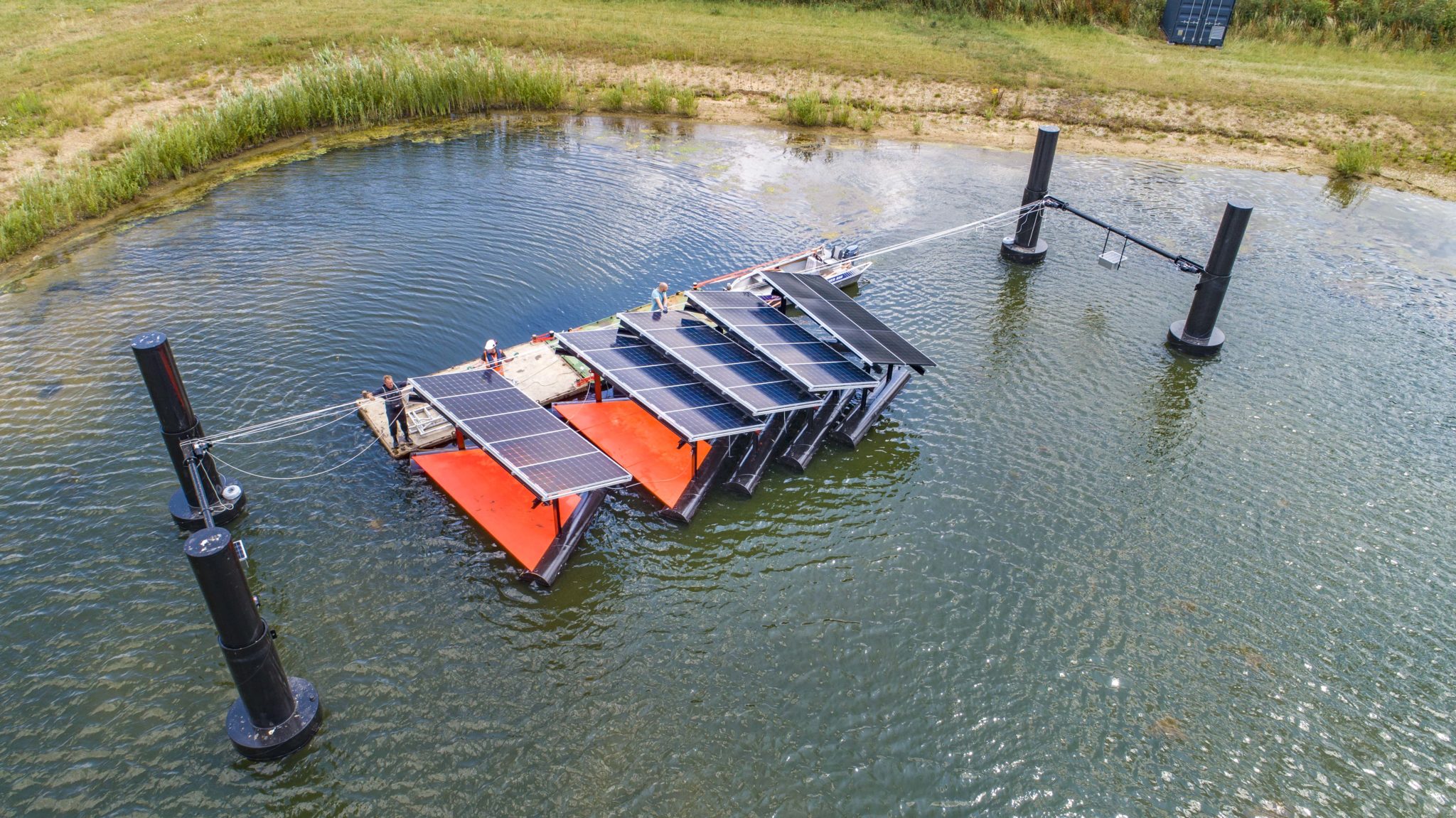
The demand for sustainable energy is high, but the surface area of the Netherlands is small. The innovation on this stamp offers a smart answer. INNOZOWA (INNOvatieve ZOn-Pv op Water) has developed a revolutionary way of making optimal use of the surface area in the Netherlands and tapping into renewable energy: floating solar panels on inland waterways. Associate Professor Olindo Isabella (Faculty of EEMCS) was involved in this project on behalf of TU Delft.
How did the idea for these floating solar panels come about?
“It mainly comes from the partners in the project, Waterschap Rivierenland, Blue21 and Hakkers. The Waterschap is a forerunner when it comes to sustainability and has the ambition to become energy neutral on the land it owns. Floating solar panels can help achieve these goals. From TU Delft, we have contributed to this with our extensive technical knowledge in the field of solar cells and photovoltaic systems, together with the other partners.”
What successes have you had with the project?
"A number of! It has resulted in a patent, which we have applied for together with two of the other partners as the basis of a commercial application. The project has also produced papers, some of which have been published in leading scientific journals. We are also in talks with the Rivierenland Water Board about a follow-up project, in which we might build a new installation of floating solar panels on inland waterways.”

What challenges have you faced?
“A lot of expertise comes together in 'floating solar': not only solar cell technology, but the installation must also be able to float well and be resistant to wind and light waves. That presents several challenges. The biggest one was about making good designs employing bifacial solar panels. Many floating solar panels are mounted very close to the water, but in this way you miss out part of the energy yield when using bifacial solar cells, because they absorb sunlight from both sides. So we opted for an installation that is more than one meter above the water. Another innovation - an excellent piece of engineering - is that we have made the design in such a way that the solar panels can be pushed together like shopping carts. That was a requirement for the Water Board. Since they chose a wastewater treatment lake for the installation, in that way they can properly clean the water.”
What does the future look like?
“This technology has several applications. It is a godsend for the Netherlands because space is scarce in our country. In this way you can generate green electricity without it being at the expense of, for example, agriculture or other vital infrastructure. If you look at the costs and the energy yield, we now also know that this system can compete with solar panels on land. Besides that, in countries with a different climate, the floating solar panels also offer a solution to prevent water in lakes and rivers from evaporating during hot periods. It therefore ensures better use of scarce space and can contribute to dehydration.”
Why is it good that this innovation is now 'going around the world'?
“It is an international recognition of the wonderful innovations that the consortium has delivered. As TU Delft, we are proud to have been part of this.”